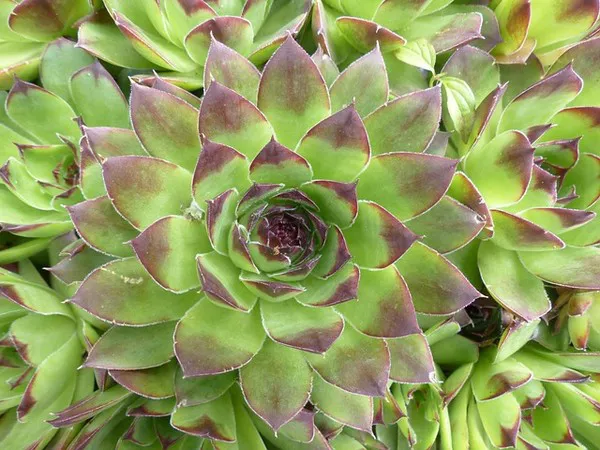Succulents have become increasingly popular in recent years as houseplants and outdoor ornamentals due to their unique and diverse appearances, ease of care, and resilience. With a vast array of succulent species and varieties available, it can be challenging to identify the specific type of succulent you have. In this comprehensive guide, we will explore the key characteristics and identification tips to help you determine the species or variety of your succulent.
Succulent Classification
Before delving into the identification process, it’s essential to understand the basics of succulent classification. Succulents belong to the plant family Crassulaceae, which encompasses a wide range of species. Within this family, succulents are further categorized into different genera, each with its unique characteristics.
Common Succulent Genera
Echeveria: Echeverias are known for their rosette-shaped leaves that form symmetrical, often tightly packed arrangements. They come in various colors, sizes, and textures, making them a favorite among succulent enthusiasts.
Sedum: Sedums are versatile succulents with diverse growth habits, from ground covers to trailing varieties. Their leaves are typically fleshy and come in various shapes, including round, oblong, and needle-like.
Crassula: Crassulas are characterized by their thick, stacked leaves and unique growth patterns. They can range from small, compact plants to larger tree-like specimens.
Aloe: Aloe plants are renowned for their spiky, toothed leaves and often have medicinal properties. They vary in size, from small potted plants to large outdoor succulents.
Haworthia: Haworthias are known for their distinctive, windowed leaves that often form rosettes or clumps. They are generally smaller in size compared to other succulents.
Identifying Your Succulent
Now that you have a basic understanding of succulent classification, let’s delve into the step-by-step process of identifying your succulent:
Observe the Growth Habit: The first step in identifying your succulent is to observe its overall growth habit. Is it a low-growing ground cover, a tall and upright plant, or something in between? Some succulents, like Sedums, tend to trail or cascade, while others, such as Agaves, grow in a more upright fashion.
Examine the Leaves: The leaves of succulents hold valuable clues to their identity. Take note of the following leaf characteristics:
- a. Leaf Shape: Are the leaves round, pointed, spiky, elongated, or rosette-shaped?
- b. Leaf Size: Measure the length and width of the leaves, as size can vary significantly among different succulents.
- c. Leaf Texture: Are the leaves smooth, waxy, fuzzy, or covered in tiny bumps?
- d. Leaf Color: Note the color of the leaves. Succulents can come in various shades of green, blue, purple, red, or even variegated patterns.
Check for Special Features:
Some succulents have unique features that set them apart:
- a. Spines and Thorns: Aloe, Agave, and some cacti have spines or thorns on their leaves or stems.
- b. Leaf Windows: Haworthias and some Gasterias have translucent “windows” on their leaves.
- c. Rosette Formation: Echeverias and Sempervivums often form tight rosettes of leaves.
- d. Pups or Offshoots: Some succulents produce small offsets or pups around the base of the main plant, such as Agave and Aeonium.
Observe Flowering Characteristics:
While succulents are primarily identified based on their leaves, their flowers can provide additional clues to their identity. Take note of the color, size, and shape of the flowers when your succulent blooms. Many succulents have unique and attractive flower structures.
Research Succulent Guides and Databases:
To further narrow down your succulent’s identity, consult succulent identification guides, books, or online databases. There are numerous resources available that feature detailed descriptions and images of various succulent species and varieties. Websites, forums, and social media groups dedicated to succulents can be valuable sources of information and assistance from fellow enthusiasts.
Seek Expert Advice:
If you’re still uncertain about your succulent’s identity after conducting your research, consider reaching out to local botanical gardens, nurseries, or succulent enthusiasts’ clubs. These experts can provide personalized guidance and help you identify your succulent more accurately.
Common Succulent Identification Challenges
Identifying succulents can sometimes be challenging due to several factors:
Hybridization: Many succulents are hybrids, resulting from crossbreeding different species. Hybrids often exhibit a combination of characteristics from their parent plants, making identification more complex.
Variable Traits: Succulents can display variations in leaf shape, color, and size, even within the same species. These variations are influenced by factors such as environmental conditions, sunlight, and water availability.
Limited Growth Information: Young succulents may not exhibit all the characteristics needed for identification. It’s often helpful to observe a succulent as it matures to get a more accurate identification.
Conclusion
Identifying your succulent can be a rewarding and enjoyable endeavor, allowing you to better understand and care for your plant. By closely observing its growth habits, leaves, flowers, and unique features, consulting relevant resources, and seeking expert advice when needed, you can successfully determine the type of succulent you have. Remember that the world of succulents is diverse and ever-evolving, so don’t hesitate to explore and learn more about these fascinating plants. Whether you have an elegant Echeveria, a charming Haworthia, or a robust Aloe, each succulent brings its own beauty and charm to your collection.


